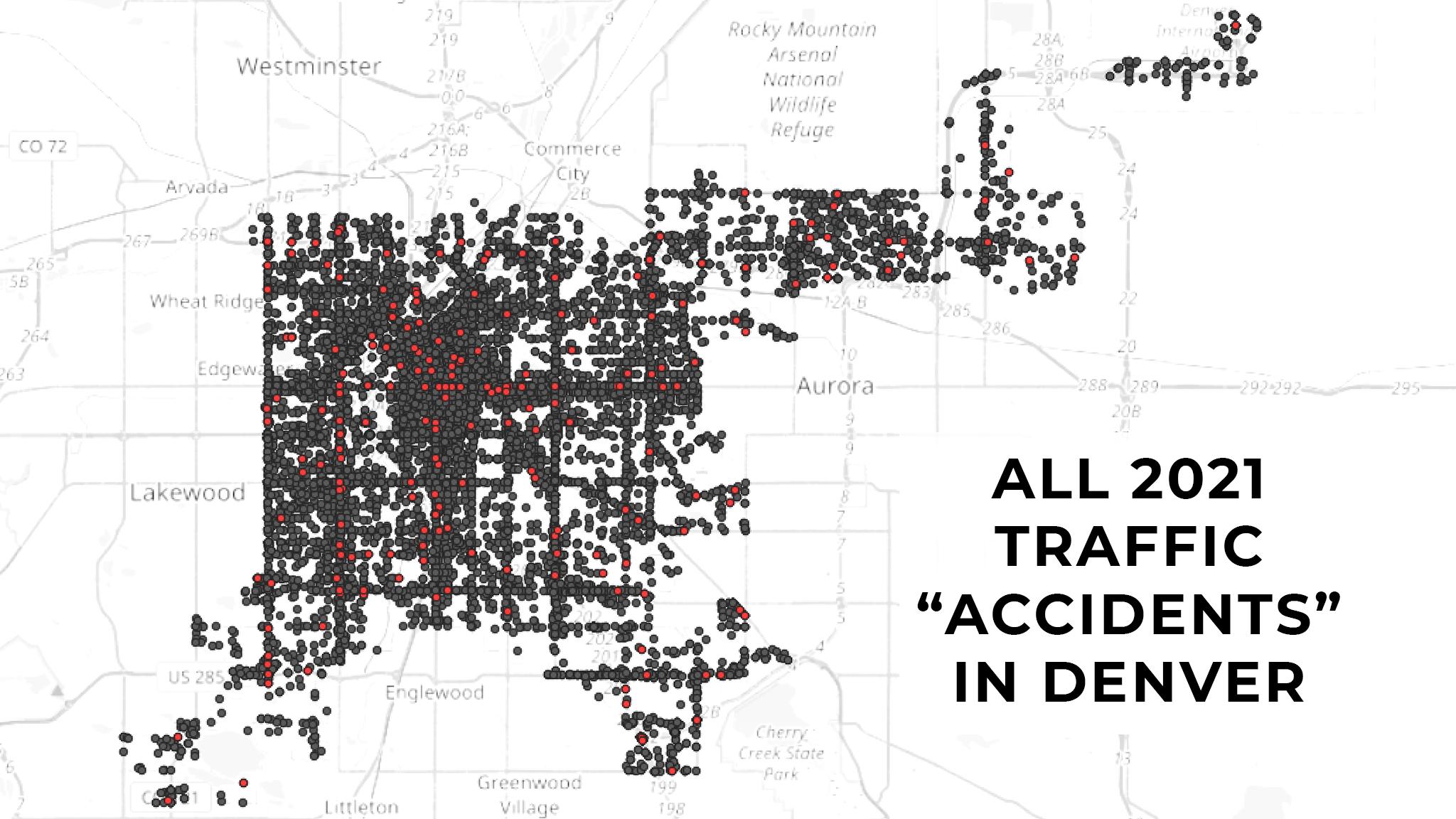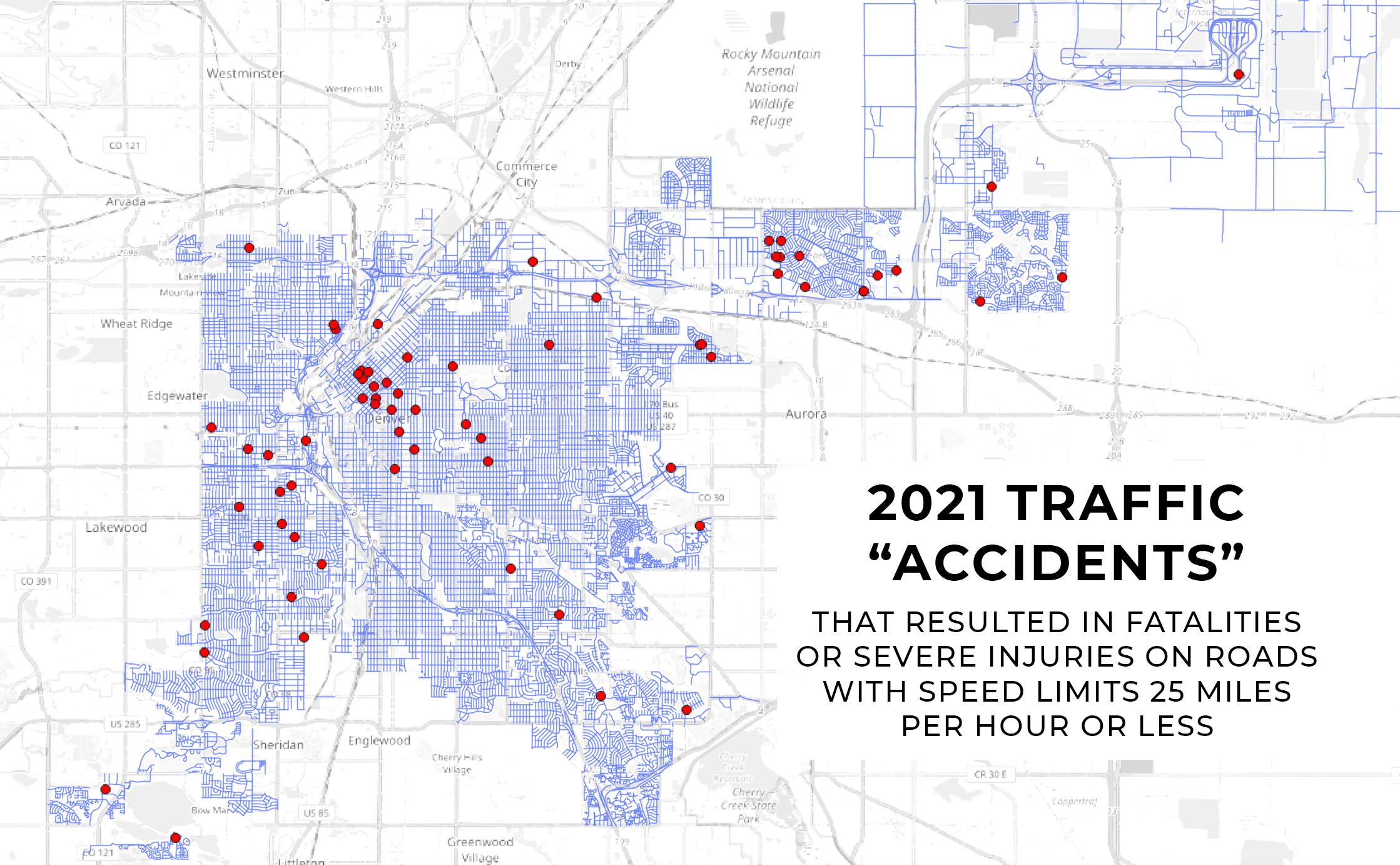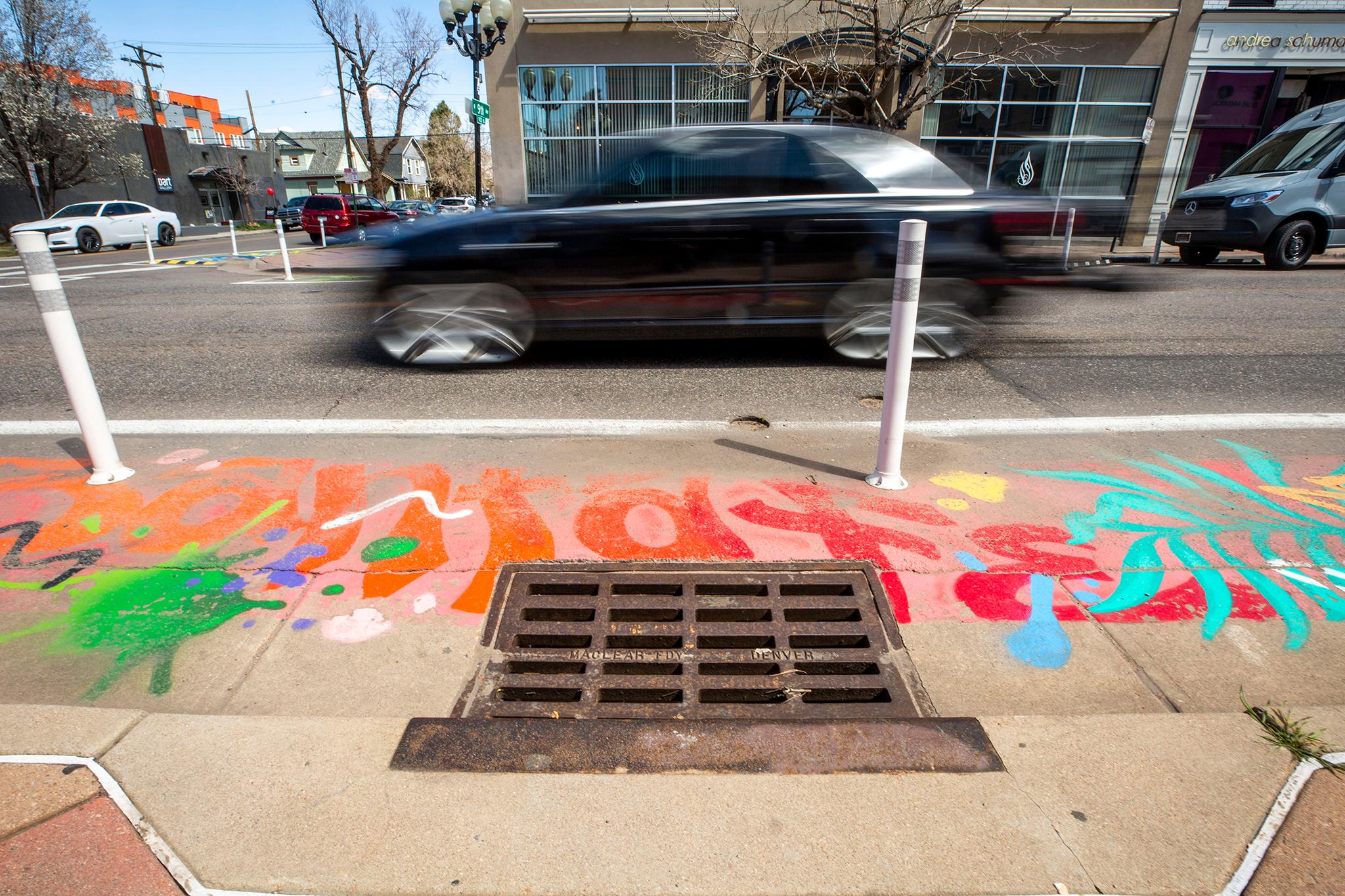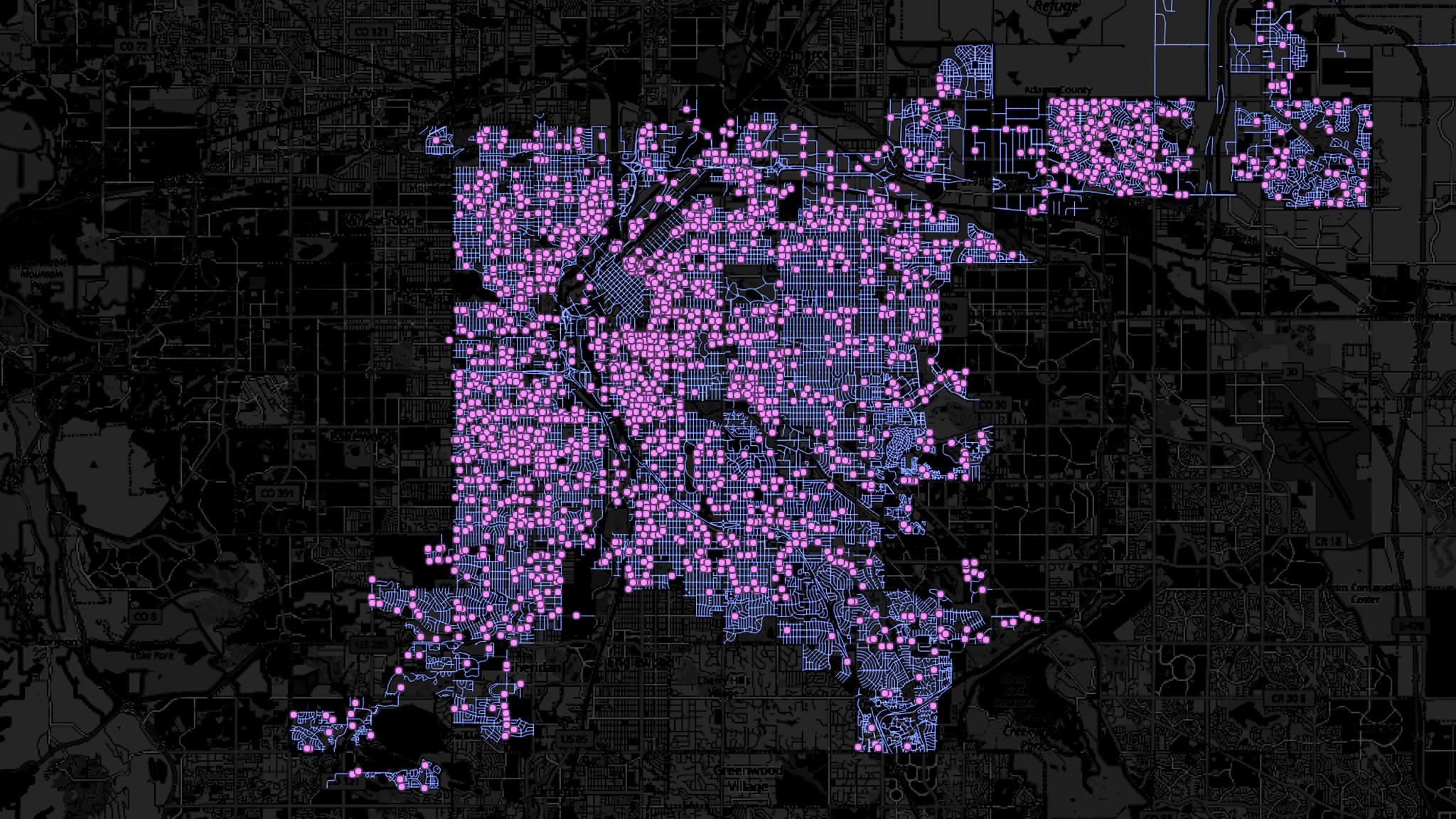Traffic fatalities reached an all-time high in 2021. According to city data, 84 people died in traffic crashes last year, surpassing Denver’s 2019 record high of 71 people.
One way the city is looking into making Denver streets safer is by lowering speed limits in residential areas — or on streets without striped lanes or centerlines.
In December, Denver City Council approved the “20 is plenty” ordinance, which will reduce the speed limit on neighborhood streets from 25 to 20 MPH.
Councilmember Paul Kashmann, who spearheaded the bill, said that “There’s no illusion that dropping neighborhood speeds from 25 to 20 is the single silver bullet needed to reduce the chaos on Denver streets. It’s the beginning of a change in culture and a way of thinking that we just need to slow down.”
Activists agree. “We’ve seen from other cities that just changing the speed limit itself does have some impact,” said Jill Locantore, the executive director of The Denver Streets Partnership, a coalition of community groups that advocate for safer streets.
The speed changes got people talking. Some Denverites worried enforcement would increase, though Denver Police said that wouldn’t happen.
Others, like Councilmember Kendra Black, said the city should focus on arterial streets or major streets, such as Colorado Boulevard.
One reader recently asked us if we knew how many traffic crashes have occurred on residential streets. Here’s our answer: we do now!

Let’s get nerdy, Denver.
A Denverite analysis showed that in 2021, there were about 3,453 traffic “accidents” in total on streets with speed limits 25 miles per hour or less, based on city data. That’s about 20% of the total 18,000 incidents in Denver in 2021.
Of those local “accidents,” 1,460 happened during the day, 42 of them involved a bicycle and 80 of them involved a pedestrian. About 329 crashes happened in the Central Business District (downtown) or the Union Station statistical neighborhoods, meaning many of them took place on regular streets.

Now, around 464 crashes resulted in serious injuries or fatalities in 2021, according to the city. That includes the 84 fatalities previously mentioned. Those serious wrecks accounted for 2.4% of all traffic crashes.
According to our analysis, 69 of these serious incidents happened on streets with speed limits 25 miles per hour or less. That’s 16% of all serious accidents: 36 of those were during the day; 23 involved a pedestrian; and seven involved a bicycle.
So, what does this mean? Well, Vision Zero, the city’s initiative to completely eradicate traffic deaths and serious injuries by 2030, has some work to do.

Locantore said in order for the city to hit zero fatalities or injuries, big changes, including wide-spread speed reductions, street structure changes and a better public transportation system, are needed to make a difference.
“We need a radical shift in our thinking about the transit system,” Locantore said. “Radically rethinking the transportation system and acknowledging that to get to zero traffic fatalities we have to reduce the amount of driving on our streets and significantly invest in other forms of transportation… As long as we’re not willing to prioritize safety over the speed and convenience of driving we’re not going to get to zero.”
Officials at the Department of Transportation and Infrastructure said in a statement they’re working on it and “planning significant investments and multimodal improvements” on major corridors, including West Colfax Avenue, Federal Boulevard, Morrison Road and Peoria Street. They’re also using “low-cost” methods “to narrow roadways to slow down vehicles and vehicle turning movements, and to shorten crossing distances for people on foot.”
Some of those improvements can be seen on East Colfax Ave and Santa Fe Drive from about 8th Avenue to Colfax Avenue.

“The fact that our roadway system was built to prioritize travel by cars, as opposed to prioritizing the safety of pedestrians and people who ride bikes, is one contributing factor that our city is trying to now correct,” DOTI officials said. “But we can’t eliminate all problems without the public’s cooperation…We need to build a culture of safety in Denver… We need people to slow down, follow speed limits and look out for one another, especially people walking and biking.”
There have been four crashes resulting in serious injury as of Jan. 14 of this year. None of them were on residential streets. There have been no deaths. And, maybe one day, it’ll stay that way.
For now, Locantore said reducing speed on neighborhood streets is one way to break a problem down into “solvable pieces.”
“If I had a magic wand and I could wave it tomorrow, I would love to reduce the speed limit across the board on all streets in Denver and follow that up immediately with street design changes but the world doesn’t work that way,” Locantore said.

A note on our methodology:
To figure out how many wrecks in 2021 happened on residential streets, we plotted every accident logged in city data over a map of streets that includes speed limits. We deleted points that fell on roadways with faster speeds and then selected points that intersected specifically with slower-limit roads. So, for example, incidents that occurred in an intersection of a slow street and one with a higher speed limit are not included in our totals. We also removed incidents that occurred in parking lots.
“Accidents,” for what it’s worth, is the city’s official terminology, which is why we use it in this story. We put quotes around the word because safe streets advocates like Locantore don’t agree it’s the right way to describe these incidents.
CPR News data reporter Veronica Penney contributed to this report.














